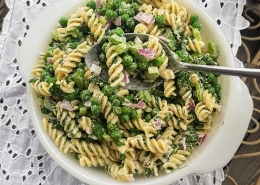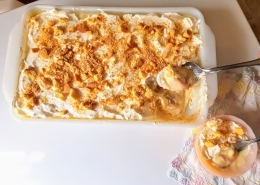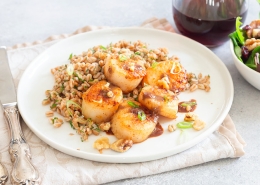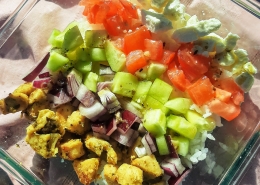Avocado Cream Sauce
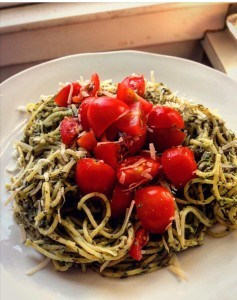 Avocados are a top emerging superfood. The green fruit has become a “hot” food known for being high in healthy monounsaturated fats, vitamins, and minerals. You may be surprised to know that one avocado has more potassium than a banana, as well as four grams of protein! Avocados are also an excellent source of folate and vitamin E.
Avocados are a top emerging superfood. The green fruit has become a “hot” food known for being high in healthy monounsaturated fats, vitamins, and minerals. You may be surprised to know that one avocado has more potassium than a banana, as well as four grams of protein! Avocados are also an excellent source of folate and vitamin E.
In the world of cooking and baking, avocados may be easily substituted for butter or oil. Avocados are also highly versatile and easily take on surrounding ingredient flavors. This recipe blends ripe avocados and fresh basil for a light and flavorful pasta dish. Without pine nuts, this avocado pesto is cheaper than homemade pesto, and with avocado instead of butter and whole milk, this recipe supplies nourishing fats your body needs. Avocado cream sauce tastes delicious over rotini or angel hair pasta. It equally compliments blackened chicken breast, salmon filets, or quinoa and roasted vegetables!
Ingredients (Serves 2-3)
1 large ripe avocado, pitted
3 cloves of garlic
1/3 c. fresh chopped basil
1/3 c. fresh chopped parsley
1/4 c. milk or dairy-free milk
2 tbsps. lime juice
½ tbsp. olive oil
½ tsp. black pepper
¼ tsp. salt
¼ tsp. red pepper flakes
Desired amount of spaghetti or about 2-3 servings
Optional: grated parmesan and diced grape tomatoes
Combine garlic, avocado, lime juice, olive oil, and milk in a food processor. Blend until thickly mashed. Then add basil, parsley, red pepper, black pepper, and salt. Blend until combined. Cook pasta for approximately 4 minutes. Mix avocado sauce from food processor with drained pasta. Serve warm with sharp grated parmesan and fresh grape tomatoes!
I have made this avocado pasta recipe many times, and it is truly one of my favorite meals. I am always impressed with how elegant this nutritious dinner feels while taking half the time and cost of a homemade alfredo or pesto sauce!
Try this recipe soon!
Happy cooking!
 Madeleine Wirth
Madeleine Wirth
Madeleine is a junior Dietetics student at James Madison University. Her interests include community nutrition and sustainable food systems. She enjoys experimenting with whole foods and preservation techniques, as well as exploring ways to educate people on adequate nutrition. Madeleine also enjoys the outdoors, running, and swim coaching children in the summertime. She is actively involved with the Blue Ridge Area Food Bank and the JMU Student Government. After graduation from JMU, Madeleine hopes to pursue a dietetic internship, obtain the Registered Dietitian credential, and educate children and families on the affordability, accessibility and importance of fresh, whole foods.

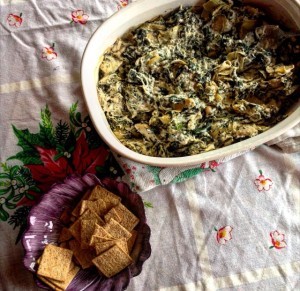 A flavorful dip leaves a lasting impression on guests during a season of potlucks and social gatherings. Spinach artichoke dip is a yummy classic. Most people who dislike artichokes, do enjoy spinach artichoke dip for its flavor and creaminess.
A flavorful dip leaves a lasting impression on guests during a season of potlucks and social gatherings. Spinach artichoke dip is a yummy classic. Most people who dislike artichokes, do enjoy spinach artichoke dip for its flavor and creaminess.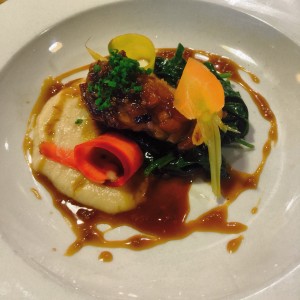 Is anyone else getting a little bored with roasted vegetables? It seems to me that every simple recipe for root vegetables calls for salt, pepper, and an oven preheated to 350.
Is anyone else getting a little bored with roasted vegetables? It seems to me that every simple recipe for root vegetables calls for salt, pepper, and an oven preheated to 350.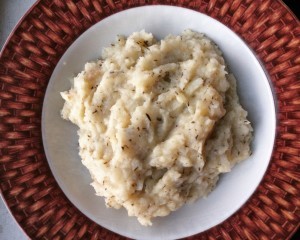
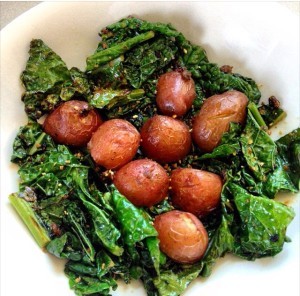 Every time I walk inside the Food Co-Op, I peruse the colorful array of fruits and vegetables. I’ve been eyeing Lacinato or “dinosaur kale” for a while now and considering ways to cook with it.
Every time I walk inside the Food Co-Op, I peruse the colorful array of fruits and vegetables. I’ve been eyeing Lacinato or “dinosaur kale” for a while now and considering ways to cook with it. 